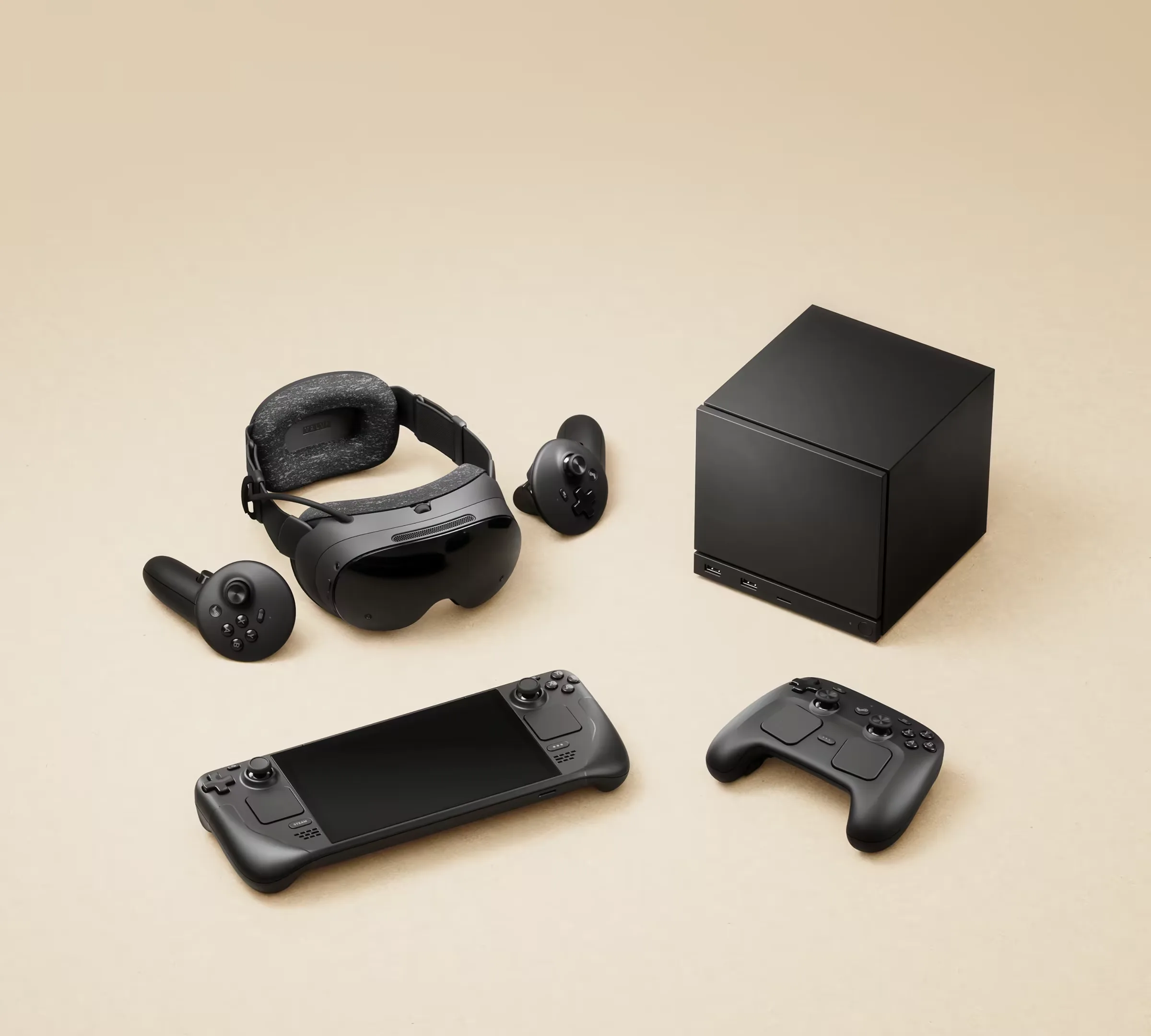Valve Revives Steam Hardware — New Steam Machine, Controller & VR Headset Coming in 2026
Valve is making a serious play to expand its hardware ecosystem, announcing a new trio of devices under the Steam banner: the Steam Machine, a redesigned Steam Controller, and a standalone VR headset called the Steam Frame. While no pricing was shared, the company is targeting a launch in early 2026.
A Powerful Living-Room PC: The Steam Machine
At the heart of Valve’s announcement is the Steam Machine, a compact cube-shaped system that blurs the line between gaming PC and console. Powered by a 6-core AMD Zen 4 CPU and a semi-custom RDNA 3 GPU, Valve claims the device delivers more than six times the performance of the Steam Deck.
It comes in two internal storage variants — either 512 GB or 2 TB NVMe SSD — with the added flexibility of a microSD slot for game library expansion. Connectivity is generous: there’s DisplayPort 1.4 (supporting up to 4K @ 240 Hz or even 8K), HDMI 2.0, USB-A and USB-C ports, gigabit Ethernet, plus Wi-Fi 6E and Bluetooth 5.3.
The machine runs SteamOS 3, giving users all the benefits of Valve’s Linux-based ecosystem — but Valve also says you’ll be free to install other operating systems if you like. A 17-LED RGB strip along the chassis adds a touch of personal flair, while an internal power supply helps keep the footprint neat and clean.
A Controller for All Your Steam Devices
Valve’s next-generation Steam Controller brings pretty significant upgrades. It retains the dual trackpads from past designs but now includes magnetic (TMR) thumbsticks, capacitive touch, gyro controls, and a neat “Grip Sense” feature: you can enable or disable gyro aiming simply by how you grip the controller.
The controller connects via a “puck” — a 2.4 GHz transmitter that doubles as a USB-C charging dock — and supports multiple connection types, including Bluetooth and wired USB. Battery life is rated at around 35 hours, making it a solid pick for long gaming sessions. Importantly, it’s not just for the Steam Machine: Valve says it works with PCs, the Steam Deck, and even the Steam Frame.
A Standalone VR Headset That Plays Flat Games Too
Perhaps the most surprising reveal is the Steam Frame. Unlike traditional VR headsets that rely on a connected PC, the Frame runs SteamOS on a Snapdragon 8 Gen 3 SoC, making it fully standalone.
Inside, it packs 16 GB of unified LPDDR5 RAM, and you’ll be able to choose between 256 GB or 1 TB of storage, with microSD expansion for even more space. The display is particularly impressive: dual 2160 × 2160 LCDs, viewed through pancake lenses, with refresh rates from 72 Hz up to 144 Hz in experimental mode.
Tracking and immersion get a boost thanks to inside-out tracking: four outward-facing cameras track your movement, while two internal cameras handle eye-tracking. This enables foveated rendering, which concentrates graphical fidelity where you’re actually looking — improving performance and visual quality.
For those who want a mixed experience, the Frame supports both standalone play and PC streaming. Valve bundles in a 6GHz Wi-Fi adapter to create a dedicated, low-latency link when streaming from a PC. The headset weighs around 440 g (with the strap), making it relatively light for what’s under the hood.
Why It Matters for Gamers
Valve’s return to hardware feels like a statement: the company isn’t just building handhelds anymore — it’s building a full ecosystem. With the Steam Machine, they’re targeting living-room gamers who want a powerful, compact PC under their TV. The new controller bridges all their devices, and the Steam Frame brings both VR and traditional gaming into a single wearable.
One of the most compelling features is cross-device interoperability: thanks to microSD slots on the Deck, Machine, and Frame, Valve recommends using a single SD card to carry your Steam library between devices. That means you could start a game on your Deck, take it to your couch, or even jump into VR, all with the same content.
What’s Still Unknown
There are still big questions. Valve hasn’t shared pricing yet, so it’s unclear how these devices will be positioned against consoles or high-end gaming PCs. It’s also not clear whether all of this hardware will be officially available in markets like South Africa, given the regional rollout of the Steam Deck.
Final Thought
With this move, Valve is signaling that it wants to build more than a handheld gaming empire — it wants a cohesive Steam-first hardware universe. If you’re a PC gamer, a Deck owner, or a VR enthusiast, these announcements are hard to ignore. As we wait for pricing and regional availability, one thing is clear: Valve is back in the hardware game, and it’s thinking big.
